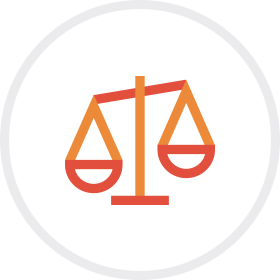復健治療的重要性
目的在於維持、恢復或促進運動功能發展,盡可能減少疾病併發症對病患的傷害;
改善病患平衡感與耐力;加強病患行動能力與社會參與功能。
應依照病患SMA 型別與現存運動里程碑制定復健計畫,並定期評估運動功能
即使已接受藥物治療,仍需進行復健訓練,才能達到運動功能進步最大化。
相關研究發現,在接受藥物治療病患中,比較接受一週 3~5 次與一週 1 次復健治療兩組病患,
一週 3-5 次組的病患運動功能較佳1。
鼓勵持續地物理治療,除了可提升病患及照顧者的生活品質外,
也可能會對日後評估分數有幫助
照顧者對醫療的期待與建議
病患父母慢性創傷經驗可能包括:失眠、情緒崩潰、因看不到未來而恐懼、害怕子女死亡2。
研究顯示病患父母期待醫療系統能友善尊重的站在父母角度思考、
接納父母經驗建議、頻繁告知病況、將父母視為平等夥伴。
治療師可以扮演的角色
盡可能讓評估過程變得較有趣,確保病患安全,與注意病患隱私。
同理罕見疾病對照護者的影響,耐心回應
以病患的最佳利益為考量,建立具安全感與信任感的醫病關係
詳細說明評估的流程與注意事項,並且以容易理解的方式說明結果
建立務實的治療期待:協助照顧者理解治療能達到的效果,
建立正確的期待,可避免因錯誤期待而失望的情況;
當病患之運動功能評估得分不如預期時,
亦應提供後續治療建議以及情感支持。
潛在益處 |
考量 |
|
手術 |
潛在益處
|
考量
|
支撐架 |
潛在益處
|
考量
|
四肢攣縮是一種脊髓性肌肉萎縮症等神經肌肉疾病中常見的併發症。7
攣縮可見於失去行走能力、或從未有過行走能力的患者。此病症加遽減低功能性動作範圍、使患者失去日常活動的功能、並且增加疼痛程度。研究指出在第二型的脊髓性肌肉萎縮症中,有22%-50%的病患其運動範圍降低大於20°,以髖部、膝部與手肘的攣縮最常發生。7 矯形治療通常包含關節活動運動,以預防關節僵直性孿縮。8
行動輔具技術
飽受疲倦與耐力缺乏的重症或漸進性疾病患者,可考慮使用電動輔助移動設備,讓病患能保存體力並專注於日常活動。對於脊髓性肌肉萎縮症患童,事例證明僅20個月大的病童便能夠安全並獨力操作電動輪椅。9,10
潛在益處 |
考量 |
|
電動輪椅 |
潛在益處
|
考量
|
站立式輪椅11 |
潛在益處
|
考量
|
控制器 |
潛在益處
|
考量
|
References
1. Mirea M et al., 2022, Physical Therapy and Nusinersen Impact on Spinal Muscular Atrophy Rehabilitative Outcome 2. 張博華(2022) 從創傷知情視角探討罕見疾病病童父母創傷經驗-以北部某醫學中心為例 3. Spinal Muscular Atrophy Clinical Research Center. Physical/occupational therapy. http://columbiasma.org/pt-ot.html. Updated March 14, 2013. Accessed April 18, 2016. 4. Wang CH, Finkel RS, Bertini ES, et al; and Participants of the International Conference on SMA Standard of Care. Consensus statement for standard of care in spinal muscular atrophy. J Child Neurol. 2007;22(8):1027-1049. 5. Mullender M, Blom N, De Kleuver M, et al. A Dutch guideline for the treatment of scoliosis in neuromuscular disorders. Scoliosis. 2008;3:14. 6. Tangsrud SE, Carlsen KC, Lund-Petersen I, Carlsen KH. Lung function measurements in young children with spinal muscular atrophy; a cross sectional survey on the effect of position and bracing. Arch Dis Child. 2001;84(6):521-524 7. Skalsky AJ, McDonald CM. Prevention and management of limb contractures in neuromuscular diseases. Phys Med Rehabil Clin N Am. 2012;23(3):675-687. 8. Tsirikos AI, Baker ADL. Spinal muscular atrophy: classification, aetiology, and treatment of spinal deformity in children and adolescents. Curr Orthoped. 2006;20:430-445. 9. Lin W, Pierce A, Skalsky AJ, McDonald CM. Mobility-assistive technology in progressive neuromuscular disease. Phys Med Rehabil Clin N Am. 2012;23(4):885-894. 10. Jones MA, McEwen IR, Hansen L. Use of power mobility for a young child with spinal muscular atrophy. Phys Ther. 2003;83(3):253-262. 11. Arva J, Paleg G, Lange M, et al. RESNA position on the application of wheelchair standing devices. Assist Technol. 2009;21(3):161-168. 12. Hilliard K. Special Effect’s controllers enable every gamer to enjoy video games. http://www.gameinformer.com/b/features/archive/2014/06/25/creating-controllers-for-all-disabilities-special-effect-enables-every-gamer-to-enjoy-video-games.aspx. Game Informer website. Published June 25, 2014. Accessed August 1, 2016.

SMA的臨床表現具個體差異,常需要涉及多領域的綜合醫療照護。4